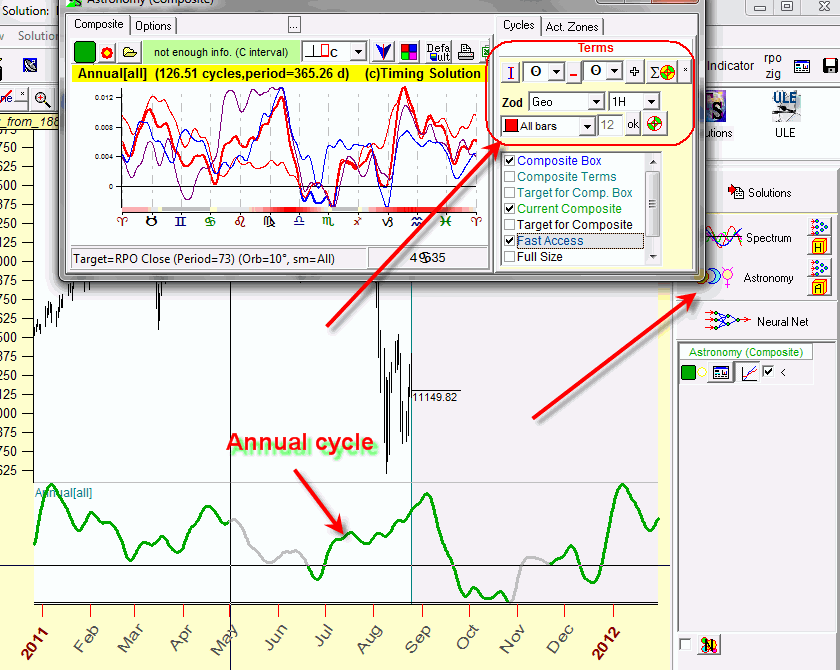
Annual cycle and its variations
For daily data, Annual cycle is the most important cycle. This article describes different types of Annual cycles.
Classical Annual
Classical Annual cycle is calculated through "Astronomy" button:

The program analyses all available price history data and searches for Annual patterns inside it.
Fast, Midterm, Classical Annuals
Another variation of Annual cycle is presented in Natural cycles module:
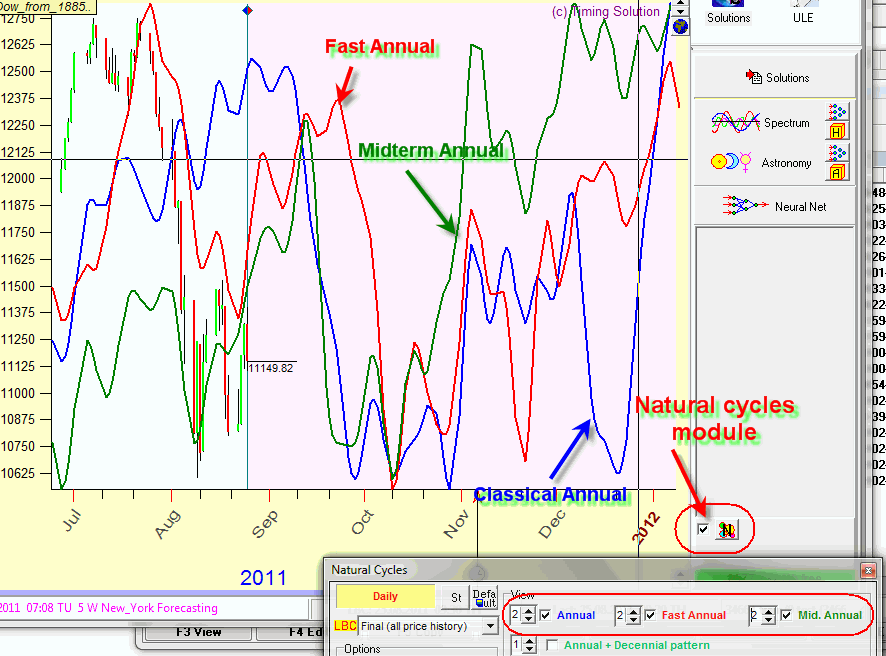
There are three cycles available there:
Red - Annual cycle calculated using last three years of price history data; we call it fast Annual, it reveals Annual patterns within last three years;
Green - Midterm Annual cycle. It reveals Annual patterns typical for the last 12 years of available price history data. In other words it shows Annual patterns within a complete Jupiter cycle (approximately) or within complete Juglar cycle. This 10-12 years cycle is the most important economical cycle.
Blue - Classical Annual cycle.
By the way, in Composite module ("Astronomy" button) you can calculate more advanced Annual cycles:
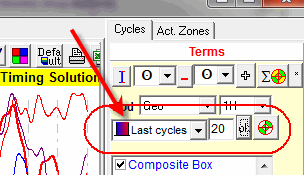
Here Last 20 cycles parameter is defined, so the program uses last 20 years of price history to calculate this Annual cycle (20 years is not just a number; this is another economical cycle, Kuznetz cycle), i.e. we can see how Annual cycle reveals itself within the last 20 years.
There are more sophisticated variations of Annual cycle.
Decennial Annuals
Now is August 2011. To calculate decennial cycle, we use the years 2001, 1991, 1981, ... - all years with XXX1 pattern. In other words we are looking for some analogy between 2011 and 2001, 1991, ... years - that is how we calculate decennial Annual cycle. It is important: we take not the last ten years, but each and every tenth year. Decennial cycle is presented in "Natural cycles" module:
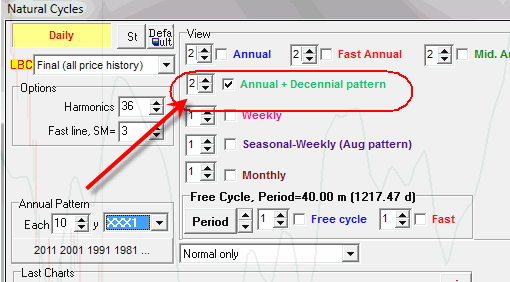
###X Annuals
In decennial cycle we used XXX1 year pattern. The decennial cycle is a trace of a theory that market patterns tend to repeat themselves in regular intervals (10 years in our example). This theory opens a lot of possibilities. Let say that we think that patterns repeat themselves every five years, starting backwards from 2010. In this case, we will look for analogies (similarities) between 2010 and 2005, 1995, 1985, ... years. To calculate XXX5 patterned cycle in "Natural cycles" module, set this parameter:
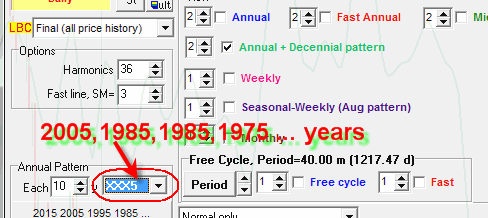
Changing this parameter, you can look for analogies between other set of years.
Planetary phases + Annuals cycles (experimental technique)
Interesting possibilities appear when we combine Annual cycle with planetary phases cycles. This idea came into my head when Mercury was retrograde. The diagram below shows the periods when Mercury was retrograde:
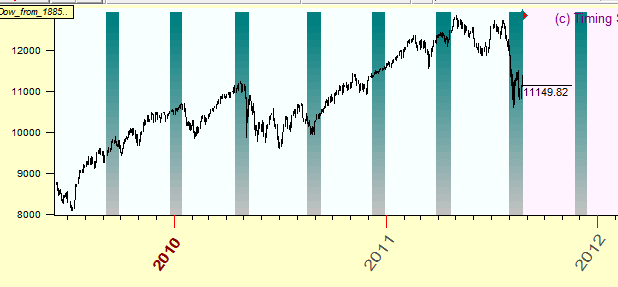
These period represent 116 day Mercury phase cycle. The idea of this approach is very simple: we calculate Annual cycle using only a portion of the price history. For our example, we analyze only those periods of time when Mercury was retrograde. All other parts of price history data (when Mercury was direct) are not used in the calculation of this variation of the Annual cycle.
To calculate this Annual cycle, open the tab "Active Zones" and click there "Filter" button:
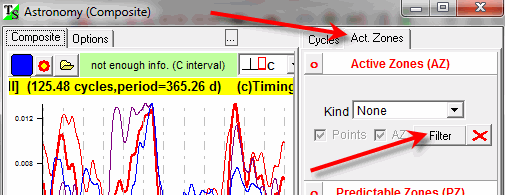
It opens the window with ULE (Universal Language of Events).
Set there the event "Mercury retrograde" this way:
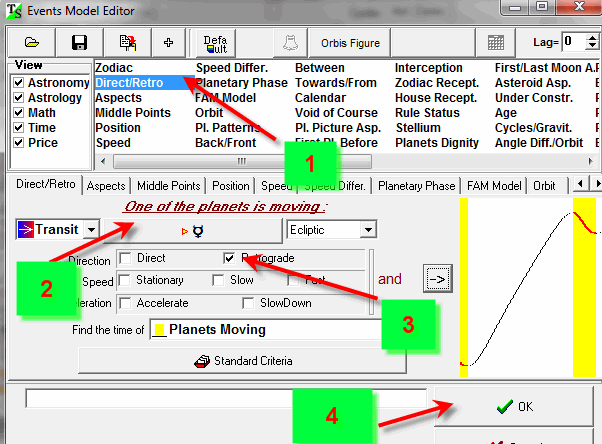
You will get immediately this Annual cycle on the Main screen. The same way you can calculate the Annual cycle in regards to direct Mercury or use some other planet or some other event.